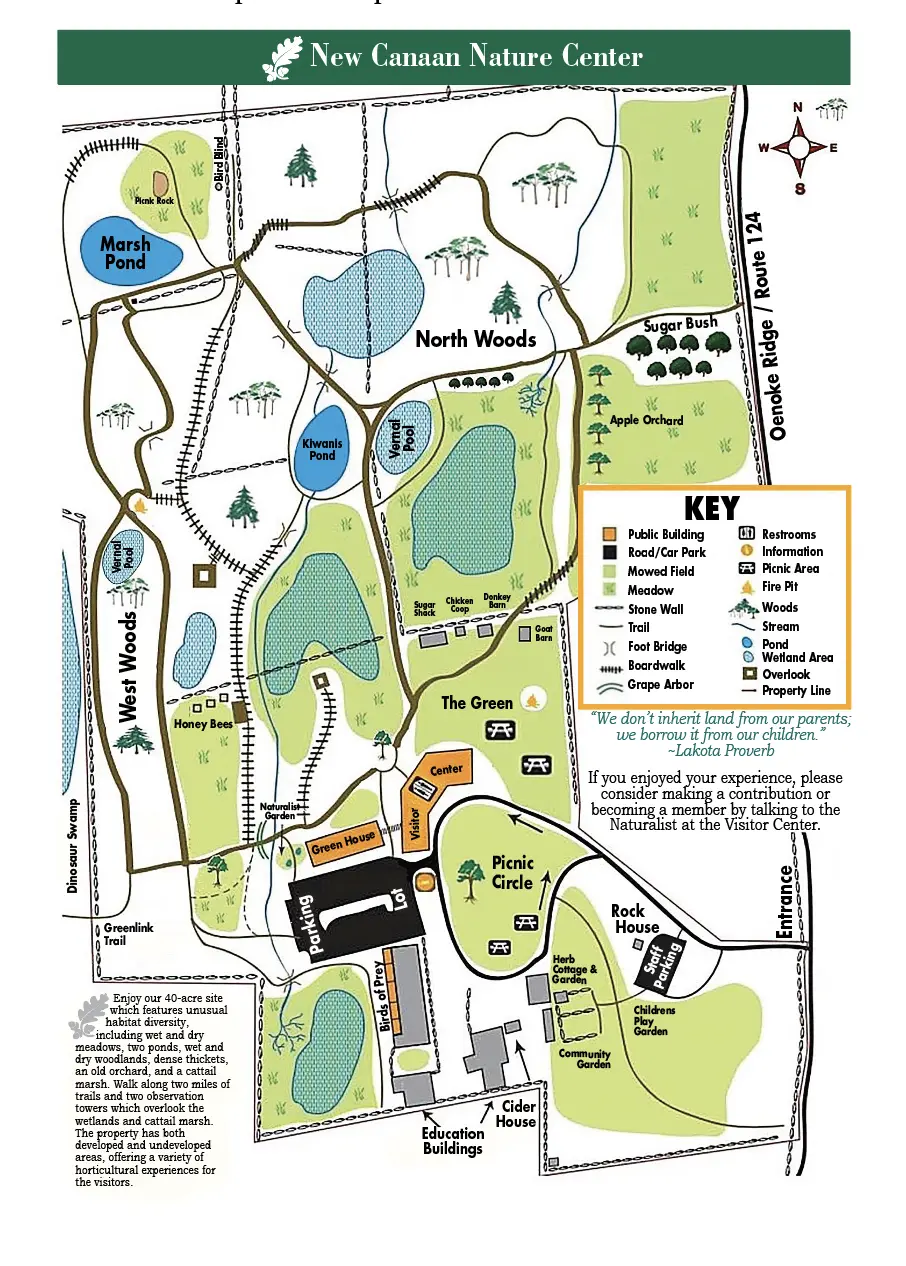By Dan Fraziar
If you go for a walk this week at the New Canaan Nature Center—and really, why wouldn’t you?—you might find yourself viewing transformed cardboard boxes, and then wondering, quite reasonably, if the local raccoons are redecorating. They are not. This is part of a larger botanical conspiracy. It’s called cardboard mulching, and it’s how the Nature Center is waging war on invasives this summer. Herbicides are out. Brown corrugated boxes are in.
“Cardboard mulch, buckthorn baggies, solarization—these are the methods we’re using,” says Executive Director Bill Flynn, who sounds very calm for a man trying to outwit entire species of stubborn plants. The goal is not just to clear the land, but to make it welcoming again—for pollinators, native flora, and the bugs and birds that call them dinner. “As areas are cleared of invasive species, we are planting native plants that attract pollinators and provide a rich habitat for insects and other small wildlife,” Flynn writes in the Center’s recent summer update.
So far, it seems to be working. Monarch butterflies have been spotted fluttering through milkweed stands, and bees the size of popcorn kernels have been heard buzzing with what one can only assume is native Connecticut joy. It’s a small ecological miracle happening right off the trail, and all without a drop of Roundup.
That said, it’s not all bugs and weeds at the Nature Center this summer. There’s also the matter of the Audubon House, a structure that once stood between the Visitor Center and the Education Building. It’s now gone—“removed by the Town,” as Flynn puts it—and in its place, the Center is creating a bird sanctuary with feeders and seating areas. No walls. No roof. Just feathered tenants and chairs for their admirers.
“Visitors can enjoy watching our feathered friends,” Flynn writes, which is an understatement really.
Meanwhile, the gardens up front—the formal 13-acre stretch near the main entrance—are being maintained by Pennington Gray, a local landscaping firm that shares the Nature Center’s minimalist ethos. That is: no herbicides, all native plantings, and a soft-spoken war on crabgrass. “We are using the same land management strategy for this area as we do for our natural habitats,” Flynn notes. Meaning: if a plant can’t thrive on its own under the gaze of a Connecticut squirrel, it’s probably not going in.
These projects, Flynn emphasizes, are funded by community support—the kind that arrives by check, by donation box, or by enthusiastic hand-raising at the annual appeal, which runs through June 30. “If you have already contributed…thank you so much! If you haven’t yet had the chance to give, it’s not too late.”
There’s an earnestness to the whole operation that’s hard not to love. It’s deeply New Canaan in its own slightly stubborn way: thoughtful, particular, and driven by the quiet conviction that things like ladybugs and coral bells do matter.
And if that’s not enough to draw you out, consider this: the trails are open, and the temperatures have dropped.
The Nature Center is a good place to go slow, maybe sit a while, and watch a downy woodpecker do its thing. Just don’t trip on the cardboard. That’s part of the plan.


